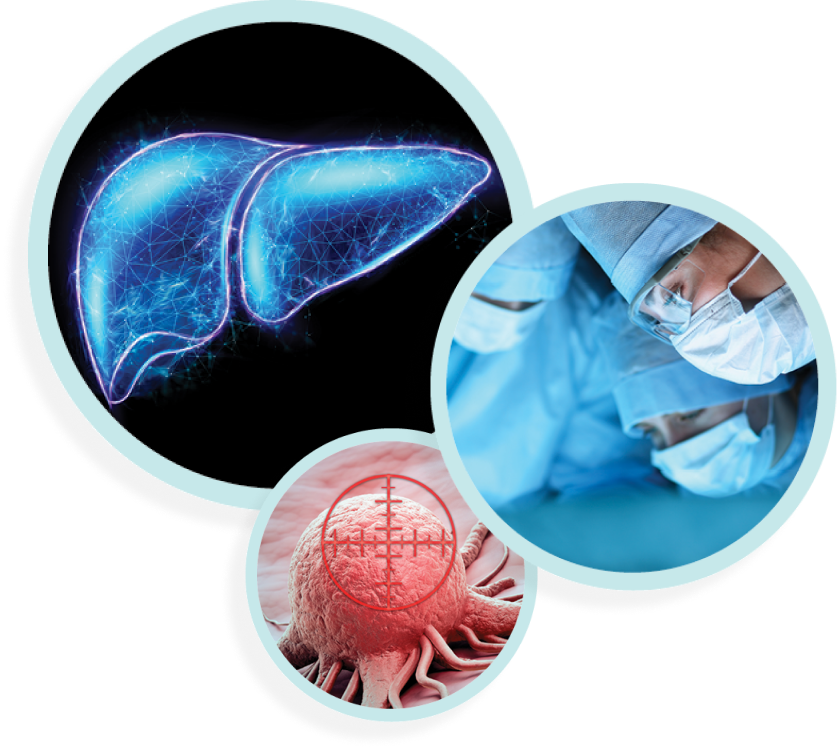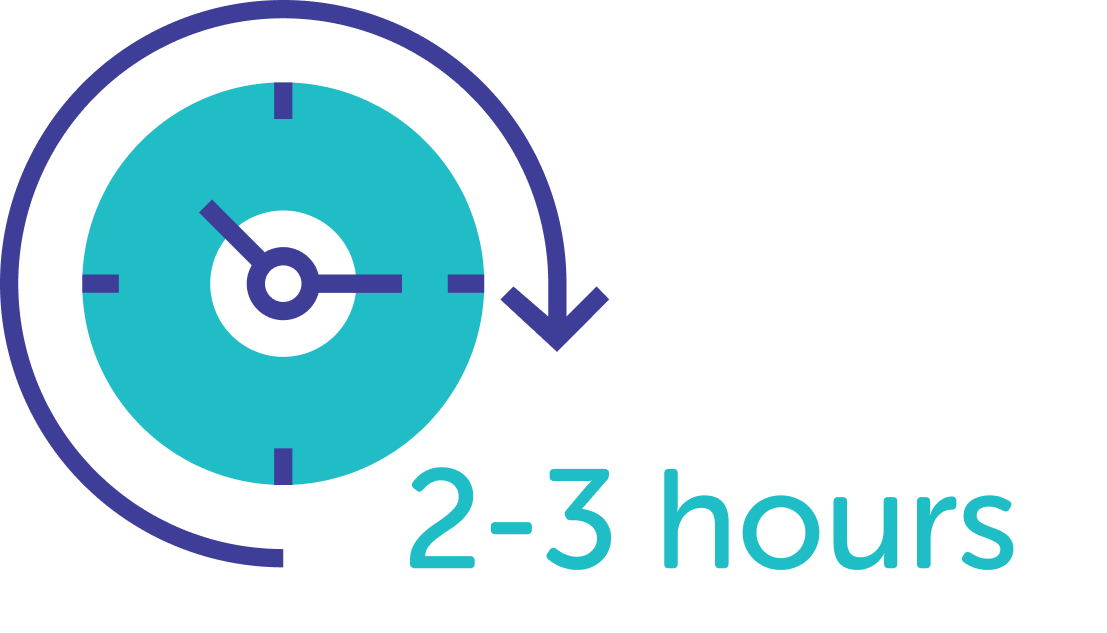What is Chemosaturation Therapy?
For Patients & Caregivers /
What is Chemosaturation Therapy?

Carol Player
Diagnosis: Ocular Melanoma Liver Metastases
Carol was diagnosed with ocular melanoma in 2015, after 5 cancer free years, Carol received the devasting news that the cancer had spread to her liver. Carol has undergone 3 treatments with chemosaturation therapy.
What is Chemosaturation Therapy?
Chemosaturation therapy is a method of treating cancers in the liver. It is a procedure carried out under general anaesthetic.
Chemosaturation therapy limits the side effects typically associated with chemotherapy by filtering the chemo-heavy blood before returning it to the body. The medical device responsible for the filtration is called CHEMOSAT. CHEMOSAT is manufactured by Delcath Systems Ltd.

Chemosaturation therapy consists of three steps:
The liver is temporarily isolated from the body’s blood circulation. This is done through the placement of three catheters (small plastic tubes) into your body – two in your groin and one in your neck. One catheter will be used to put two small balloons to “seal off” the blood in your liver from the rest of your body.
A concentrated dose of chemotherapy is delivered via a catheter to the liver, saturating the entire organ. The chemotherapy can be given at higher concentration levels than is possible in systemic chemotherapy because the liver is isolated from the rest of the body.
Blood leaving the liver is directed outside of the body via a catheter to filters that remove most of the chemotherapy agent before returning the blood to the body.
The liver is temporarily isolated from the body’s blood circulation. This is done through the placement of three catheters (small plastic tubes) into your body – two in your groin and one in your neck. One catheter will be used to put two small balloons to “seal off” the blood in your liver from the rest of your body.
A concentrated dose of chemotherapy is delivered via a catheter to the liver, saturating the entire organ. The chemotherapy can be given at higher concentration levels than is possible in systemic chemotherapy because the liver is isolated from the rest of the body.
Blood leaving the liver is directed outside of the body via a catheter to filters that remove most of the chemotherapy agent before returning the blood to the body.
Procedure time
The procedure typically takes 2-3 hours to complete – procedure length may vary and is dependent on several factors. Not all patients are suitable for chemosaturation therapy – your treating doctor will need to decide if this treatment is suitable for you.

Repeatable treatment
Chemosaturation therapy is a repeatable treatment. Evidence from clinical trial literature suggests that patients can receive between 1-6 treatments. The number of treatments received will depend on your clinical response (how well the cancerous cells have responded to treatment).
Chemosaturation therapy is only available in specialised centres. A full list of centres can be found here. The first step should be to discuss chemosaturation therapy with your medical oncologist.
Further patient information is available on
AgainstTheOdds.com
Chemosaturation therapy is only available in specialised centres. A full list of centres can be found here. The first step should be to discuss chemosaturation therapy with your medical oncologist.
VISIT AGAINSTTHEODDS.COM
Oncologist
A medical oncologist will usually be responsible for ensuring that CHEMOSAT is the right treatment approach for their patient. They are experienced in the monitoring of toxicities of chemotherapy and are responsible for the complete medical management of the patient, including, but not limited to, pre- and postoperative care. They may also be responsible for monitoring the patient during the immediate post-procedure period.
Intensivist/critical care specialist
A qualified intensivist, or appropriately qualified critical care specialist, is responsible for providing medical management of the patient in the immediate post-procedure period, during which the patient is in the intensive care unit or step down unit.
lnterventional radiologist
A qualified interventional radiologist with the knowledge, skills, experience, and hospital privileges required to perform advanced vascular interventional procedures.
Nurse
A qualified chemotherapy healthcare professional certified by the site to deliver chemotherapy, such as Interventional Radiology Technician or Registered Nurse.
Perfusionist
A qualified perfusionist is required to establish, monitor, and control the extracorporeal pump and veno-venous bypass circuit.
Anaesthesiologist
A qualified anaesthetist (anaesthesiologist) and/or nurse anaesthetist responsible for the management of sedation, analgesia, respiratory and cardiovascular support.
Pharmacist
A qualified pharmacist, on call during the procedure, to reconstitute the chemotherapeutic agent (melphalan hydrochloride), using national and local safety guidelines. The pharmacist should be aware of the rapid preparation time required for the preparation and administration of melphalan for use with CHEMOSAT.
Assess Eligibility 7
*Patients with 50% or greater tumour burden of the liver on imaging should have a laparoscopy and normal liver biopsied for both visual inspection of liver parenchyma and histological examination of the liver to rule out hepatocellular dysfunction at a subclinical level
Clinical Assessment
Assessment by Expert CHEMOSAT Team
Post Treatment Assessment
Week 1 - blood tests
Week 2 - blood tests
Week 3 - blood tests
Week 6-8 - post treatment MRI to assess response
CHEMOSAT: A 3 Step Process

France
| Publication Date | Document and Revision number | Language |
|---|---|---|
| 26-JUL-2023 | 120057 Rev E | French • Download |
| 26-JUL-2023 | 120057 Rev E | English • Download |
| 21-APR-2022 | 120057 Rev D | French • Download |
| 21-APR-2022 | 120057 Rev D | English • Download |
| 08-MAR-2021 | 120057 Rev C | French • Download |
| 08-MAR-2021 | 120057 Rev C | English • Download |
Spain
| Publication Date | Document and Revision number | Language |
|---|---|---|
| 26-JUL-2023 | 120057 Rev E | Spanish • Download |
| 26-JUL-2023 | 120057 Rev E | English • Download |
| 21-APR-2022 | 120057 Rev D | Spanish • Download |
| 21-APR-2022 | 120057 Rev D | English • Download |
| 08-MAR-2021 | 120057 Rev C | Spanish • Download |
| 08-MAR-2021 | 120057 Rev C | English • Download |
References
References
References
References
Cookies Policy
Using our website
Our website (“chemosat.com”) uses cookies to improve your experience and to provide tailored information.
What are cookies?
Cookies are text files stored on your computer so that when you visit a website it can remember who you are. Using cookies allows websites to remember your preferences and behaviour which enables websites to improve your experience.
Cookies can be set by the owner of the website or in some cases by third-party services the website owner allows to present or store other information or provide other functionality such as data analytics.
How are they used on this site?
Cookies are used to improve the functionality of our website.
This website uses session cookies. Session cookies are used to deliver the basic functions of a website i.e. to allow pages to remember technical changes or selections you may make between pages. Session cookies are temporary cookies and are generally erased when you close your browser.
We may also use cookies set by third parties for other functionalities such as data analytics and improved targeted advertising.
Managing & Removing Cookies
Should you change your mind in the future you always have the option of removing cookies from your browser. Please the below links depending on your browser: